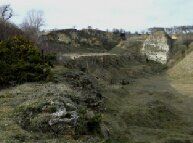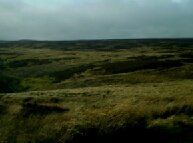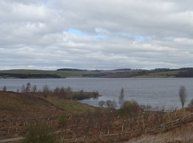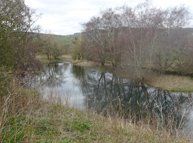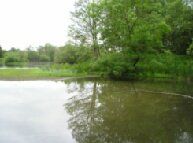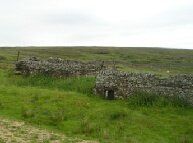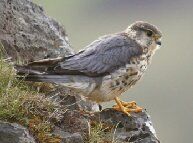
Free birdwatching magazine and guide to finding birds
List of Services
-
Durham Bird ClubWeb site List Item 1
The Durham Bird Club was grown out of the Northumberland, Durham and Newcastle Natural History Society. After an initial period of relative uncertainty in the early 1970s the Club became consolidated in its own right in 1974.
-
Durham Wildlife TrustWeb site List Item 2
Durham Wildlife Trust is a charity and was established in 1971, originally as the Durham County Conservation Trust, becoming Durham Wildlife Trust in 1988. The Trust operates across the area of the old County Durham, which today includes Darlington, Gateshead, South Tyneside and Sunderland.
-
RSPB Durham Local GroupWeb site List Item 3
This is the website of the Durham Local Group. RSPB local groups are a great way to meet friendly, like-minded people in your area while learning more about birds and wildlife.
Bishop Middleham
This reserve is considered to be one of the country’s most important disused quarry habitats for wildlife and has been designated as a SSSI since 1968.It gained notoriety in 2002 when a pair of European Bee-eater nested here raising two young...
Bollihope Burn area
An outstanding area of fast flowing streams, disused quarry workings and moorland lying between Stanhope and Barnard Castle.....
Castle Eden Dene
Castle Eden Dene National Nature Reserve (NNR) is heavily wooded with ash, elm, oak and sycamore, with stands of yew and alder.......
Derwent Gorge / Muggleswick
Ancient broadleaved woodland that have largely disappeared in north-east England, straddle the beautiful River Derwent.
Derwent Reservoir
One of the largest inland waters in England, Derwent reservoir lies between the borders of County Durham & Northumberland.
Hamsterley Forest
A wonderful variety of woodland habitats with moorland to the north boundary, and open farmland to it's east and south. Siskin, crossbill, red squirrel but best of all nightjars !
Grassholme reservoir area
An area of reservoirs, fast flowing streams, moorland and forestry provide excellent habitat for County Durham's rich variety of upland birds....
Langdon Common
This site is probably one of the best known leks in Britain. However, birders should take special care when viewing the birds. Because of the nature of the landscape, it is almost impossible to get close to Black Grouse without disturbing them.
Low Barns
Low Barns Nature Reserve is near Witton-le-Wear village and borders on the River Wear. It covers 50 hectares and is a site of Special Scientific Interest (SSSI) providing a wide range of habitats including grassland, scrub, woodland and a large lake with islands
Stanhope Moor
Wonderful and remote, the moorlands to the north of Stanhope are alive in springtime with breeding waders and grouse and are one of the best places to catch a glimpse of Britain's smallest bird of prey , the merlin.
Tunstall reservoir
Tunstall Reservoir supports a small number of breeding great crested grebe, tufted duck, goosander, moorhen, coot, mallard and common sandpiper. Oystercatcher, redshank and lapwing sometimes roost on the dam....
Waldridge Fell
Waldridge Fell is of importance as the only major area of lowland heath in County Durham. It includes range of heathland, grassland, wetland and woodland habitats, several of which are rare or absent in the rest of the County. Waldridge Fell is close to the town of Chester-le-Street, about 5 miles from Durham City Centre.
DURHAM
Browse a range of New and used Avifauna for the English county of Durham.
Also you may wish to view a wide selection of suitable field guides by
The Birds of Durham
This county avifauna is the result of five years of hard work from a dedicated team of editors and contributors under the auspices of the Durham Bird Club. There are five introductory chapters, but most of the book (865 pages) is taken up by the systematic list. Each species account begins with a concise statement of current status and a small vignette.
A Summer Atlas of the Breeding Birds of County Durham
For the general reader it is hoped that this atlas provides an insight into the distribution of the County's breeding birds and how they relate to the geography and habitats of the area. For the ornithologist it is hoped that the book provides a first serious attempt, at the local level, to accurately map the distribution of the County's breeding birds and, alongside this, attempt to quantify their breeding populations using the best information to hand at the present time.
Where to watch birds in Durham
- Publisher : Durham Bird Club; 1st edition (1 Jan. 1992)
- Paperback : 73 pages
- ISBN-10 : 1874701008
- ISBN-13 :
- 978-1874701002
Natural History of Northumberland and Durham
271pp.Hardback with black-and-white photographs with illustrations from Thomas Bewick's famous works Quadrupeds, History of British Birds and History of British Fishes.
Birds of Gateshead
- ASIN : 095211870X
- Language : English
- Formerly part of Durham County
Where to Watch Birds in Northeast England: Northumberland, Tyne and Wear, Durham and Cleveland
This provides information on birdwatching sites in Cleveland, Durham, Tyne and Wear and Northumberland, detailing the major and minor sites for each county, and a listing of the birds to be found throughout the year.
Birds in Durham 2002 and 2003
- ASIN : B00793OOYO
- Publisher : Durham Bird Club (1 Jan. 2007)
- Paperback :
- 156 pages
Best Birdwatching Sites: North-East England
This latest addition to the Best Birdwatching Sites series is the largest yet produced, reflecting the wealth of birding riches uncovered by author Brian Unwin in all parts of Northumberland, Co Durham and Cleveland. Readers will find details of renowned sites such as the Farne Islands, Lindisfarne and the RSPB's exciting new Saltholme reserve, but Brian also enthuses about many exciting bird walks in inland Co Durham and Northumberland as well as coastal migrant hotspots and the former industrial sites now becoming havens for nature.
Please note that we receive many hundreds of e-mails weekly. We will try our best to respond to your enquiry as efficiently and quickly as possible. If your enquiry relates to reserve and birding site access, please contact the relevant organisation. Sick, injured or young birds to RSPCA.
Enquiries about the sale of used birding equipment or ornithology books should be sent to the contact below.
Thank you
Join our mailing list
Contact Us
We will get back to you as soon as possible
Please try again later
